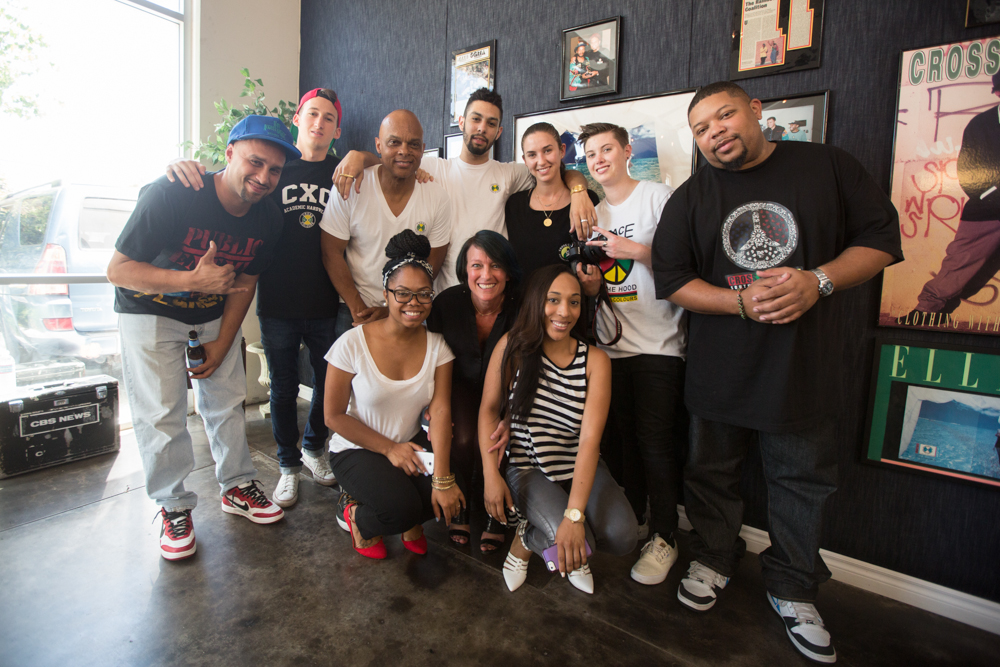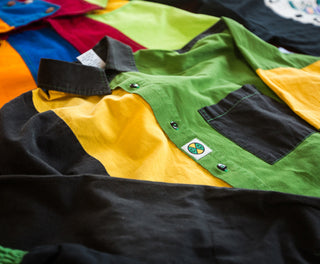The following article is taken from the upcoming Fall/Winter 2014 issue of The Hundreds Magazine:
Cross Colours is back.
Well, the reality is that Cross Colours never quite went away. In the early 1990s, Carl Jones and TJ Walker founded an urban streetwear brand that went against the drab gangbanger workwear of the time, opened the inner-city up to positivity, and introduced baggy pants to the Yo! MTV Raps generation. Aptly named Cross Colours, the label skyrocketed overnight, draped across the backs of the biggest rappers, actors, and athletes. But as rapidly as Cross Colours propelled into the mainstream, the fire extinguished just as fast. In a few years’ time, Cross Colours was but a faint conversation around the tradeshow water cooler. Whatever happened to Cross Colours? On a late summer afternoon in Vernon, I sit down with the founders at Cross Colours’ new offices as they speak on serendipitous success, fateful choices, and what it’s like to write a $12 million season on the MAGIC floor.
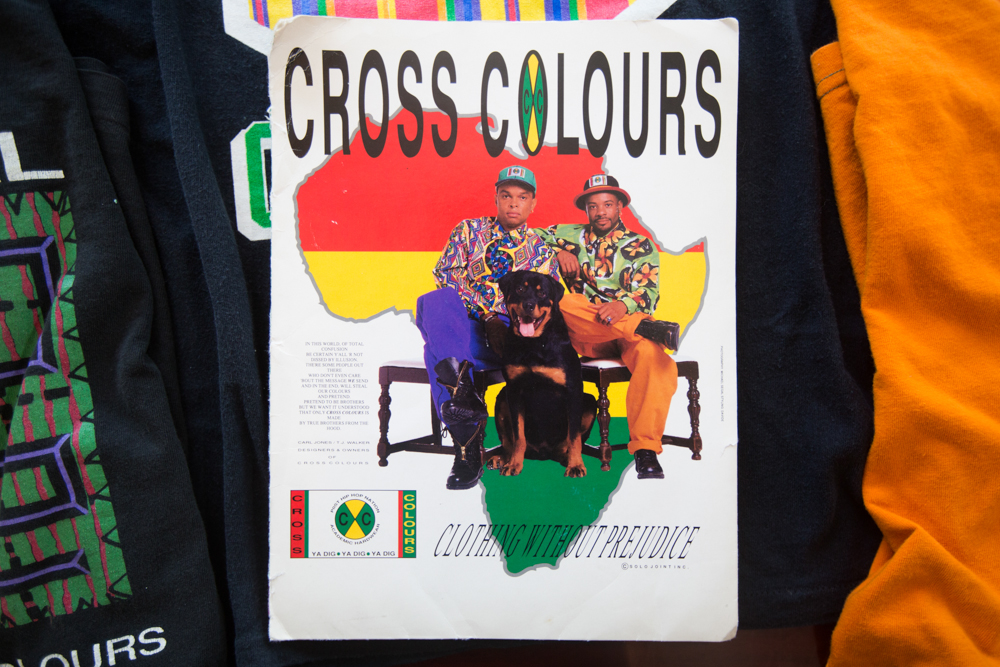
Carl: …I think that’s one thing about TJ and I. He comes from a graphic art background while I come from a cut n’ sew, pattern-making background. And when we came together, we realized that it was a good yin-yang effect. He was good graphically and I would get garments made.
TJ: If you look at our history in terms of what we’ve done, that’s pretty much how it actually comes together. We make sure we get great garments and we put great art with them. And make statements.
Carl: Yeah, it was important that the clothes spoke to people. And they did: the positive messages, the colors, coming from the street, coming from the ghetto. It’s clothing without prejudice; it’s clothing for everybody. That’s kind of what we wanted to present to people.
Let’s take it back. How did you guys even meet and where did the idea come from?
Carl: My dad was an entrepreneur. He was a car salesman and he had a repair shop and that’s not what I wanted to do in life. I wanted to make clothes. So out of fashion school, I started screen-printing and doing graphic arts. I was never as good as TJ because he’s naturally talented. Eventually, I hired someone to help me with the graphics and I had a small shop maybe the size of this room.
Where was it?
Carl: Downtown LA. 38th and Grand. At the time, Guess was just starting. It was in ’83. They gave me work, I started doing graphics for them, I started doing printing for them, and I grew. In the next year I moved to a bigger building and bought a belt printer. I was in the beachwear business then and did these great oversized shorts and oversized T-shirts. It was called Surf Fetish.
We were looking for more graphic artists at the time for Surf Fetish and TJ showed up from an ad for a graphic artist. We were paying minimum wage in ‘85. He had driven out from Mississippi in a small Honda with a broken window and he was sleeping in his car. But, you know, he graduated from college, drove out by himself, and he went balls out. “I’m gonna go to LA and I’m gonna make it.” And so that’s how we met.
Surf Fetish got to a point where the business wasn’t about branding anything. It was just about making money.
…except you guys are artists.
Carl: I basically just packed my desk and I said, “When you guys figure out what I’m owed from the company, just send me a check.” I just left. I gave them plenty of warning and it was very emotional. I left and we worked out of my house for a while, and out of [TJ’s] house. About a month later we rented a studio loft downtown... And we started Cross Colours.
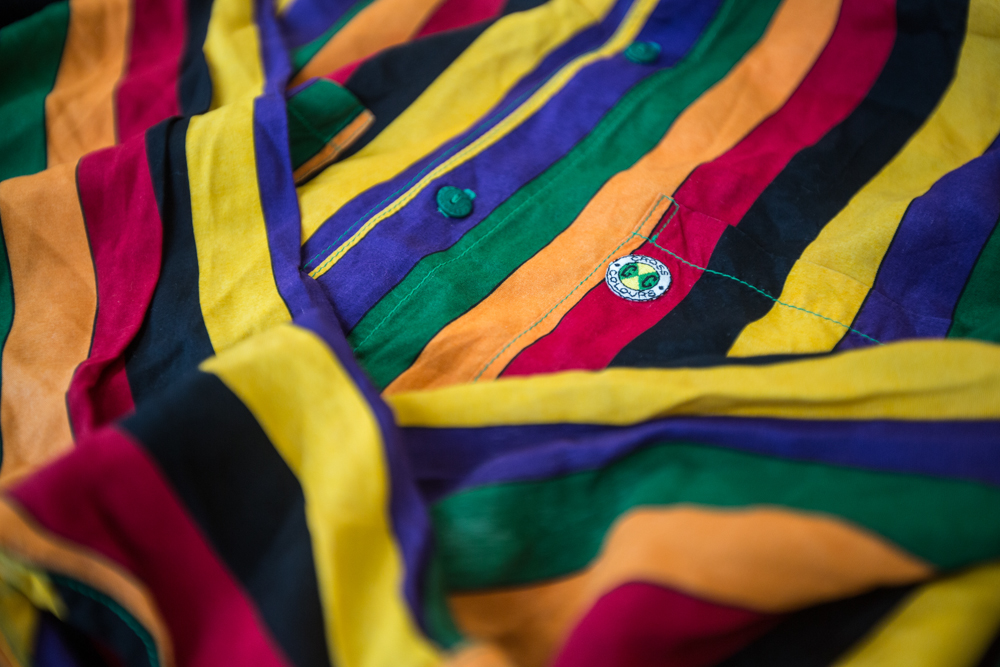
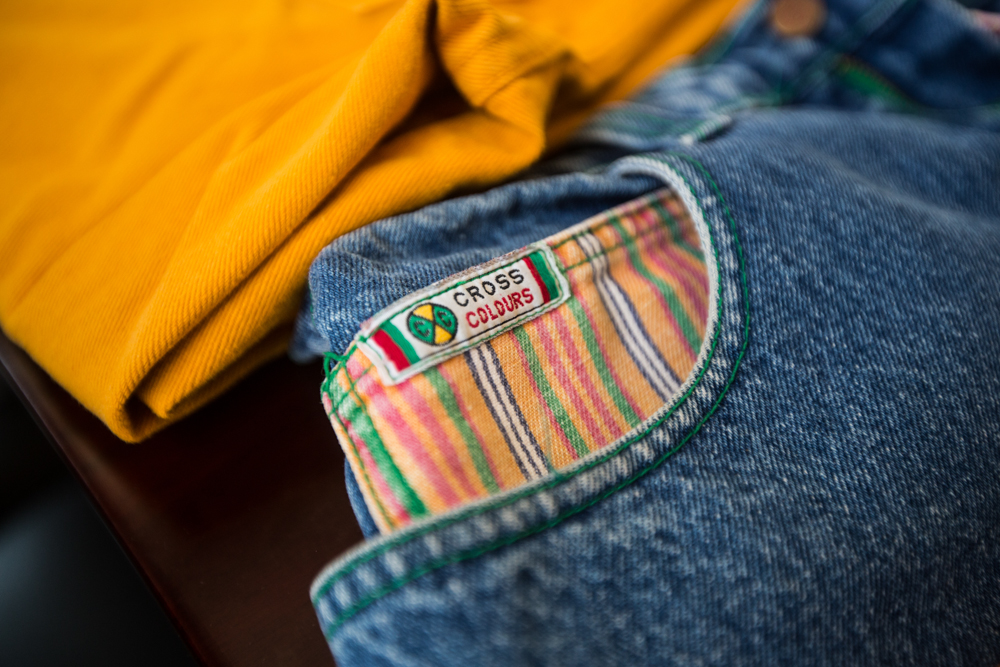
And this all started because of a swatch of Kente cloth?
Carl: A piece of fabric.
TJ: It elevated into a lifestyle, a collection, a look, a style. It morphed.
Carl: We made a woven shirt with [it] and then TJ started color-blocking fabrics and putting fabric here on shirts. It started morphing into jeans and shirts. So many drawings and sketches and we were like, “Whoa we’ve got to narrow it down, begin to make patterns, begin to make our fit.”
Then in 1989, we went to New York and rode the subways and we noticed that the young kids there… their pants were hanging down.
They were already sagging?
Carl: Only in New York. Very much oversized. Now they wear them kind of fitted and sagging, but then, it was just oversized and they automatically sagged because it was so big that [all that fabric from the waist] just bunched up. It was size 40, belted, and we were like, “What is that?” If that’s happening, we can take that block.
We were manufacturers. We were graphic artists. We said, “We’ll take that fit and we’ll bring the waist in to a fitted, but we’ll keep the silhouette.” A large? We’re gonna spec it as a medium. Let’s do everything oversized. We came back, we had our spec in our head. TJ had the drawings and the colors and the Kente cloth and the bodies and the jackets. We began to make patterns, our fit, our fabric, wash our fabric, dye our fabric, and it took us about three months.
TJ: At the same time, too, we were also developing: “What is the philosophy of this collection?” We had all that but we had to pull it back to say, “Okay, what is the basis of this?” We needed to give the kids a reason to go purchase it.
There’s what you do. But also, there’s why you do it.
TJ: David Stennet was very instrumental to that, as far as our marketing and promotions person. He wrote the story to go along with what we were actually doing.
And the name “Cross Colours” came from David?
TJ: Part of the name did but, actually, in the beginning the name was Cross Cultures. Then we had some problems with that name, but we wanted it to still be of that nature. So then we said Colours, and it made more sense. For us, the colors were not only for the people, but for the fabric, for the thread, for the united force of people. Gang violence was also very prevalent at that time. So then we said Cross Colours for all that too – to unite the colors of the gangs.
We went to the first show as, “We’re from the neighborhood, we’re streetwear.” It was amazing! David was able to get a few pieces on In Living Color, Fresh Prince of Bel-Air.
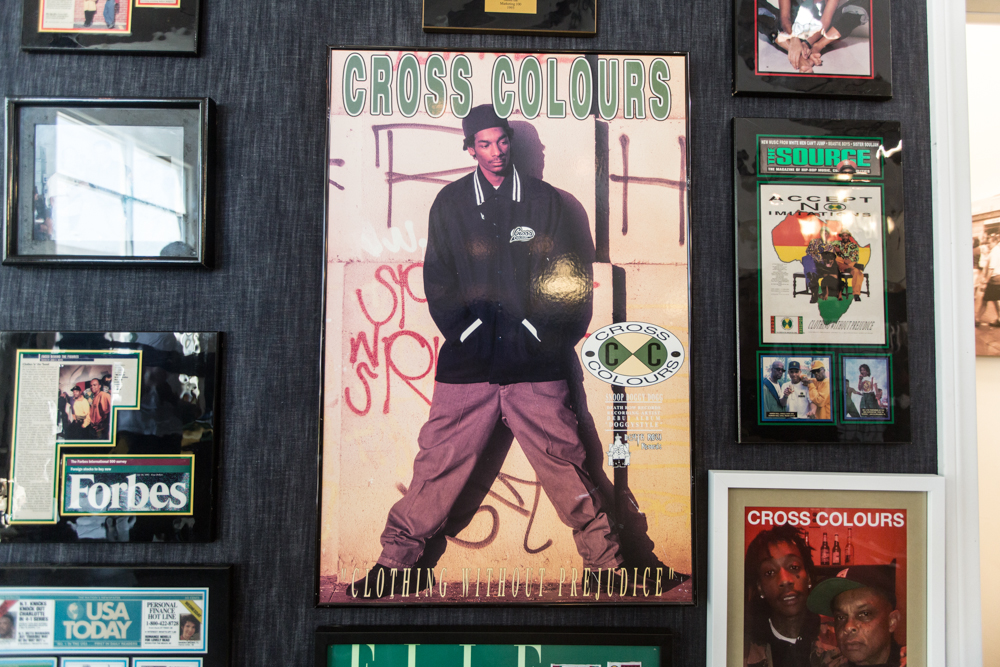
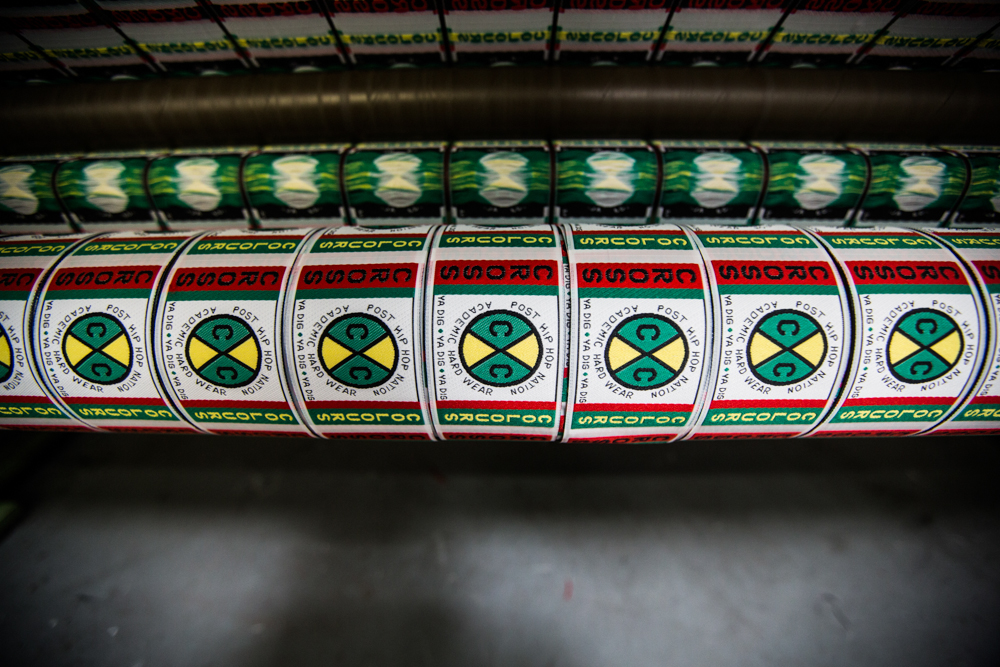
Yeah, because that shaped the aesthetic of all the pop culture of the time.
Carl: Oh, it did. And all these different things were developing too: MTV, VH1, even Source Magazine. They were helping us and we were helping them, and with that, we just got this mass influx of promotion and branding. Without us even being aware of what we actually were doing in the first place. It just morphed in front of us. And when we went to the Magic trade show in Vegas in 1990, there were actually people looking for us!
TJ: Which I didn’t understand.
Carl: We were actually terrified when we did the show.
TJ: We spent all our money.
Who else was out there at the time?
TJ: No one. That was it. And no color. Everyone was doing beige and maybe navy and black or whatever, but no color. It wasn’t really happening in the market. So that attracted people to the booth. When we finally grasped what was going on, we realized that we had a schoolroom set up there. Lines and rows of chairs of buyers who wanted to purchase the product. I was like, “Carl, look outside the booth!” There were people standing in line. I didn’t understand.
I hope you guys celebrated that night.
Carl: I think we worked the show until security kicked us out. We were writing orders until 8 or 9 o’clock at night. Everybody was gone and we still had people. The whole show was gone; we were still busy because people were waiting to buy. They wouldn’t leave until we wrote the orders. That happened every day.
And then what happened? What was the next chapter?
TJ: Our first show, written orders, papers signed… We wrote somewhere between 8 and 12 million.
From one show? Are you kidding me? I’ve never heard of that. That will never happen again.
Carl: It was orders by the pound. I remember I went and bought luggage for the orders because I wanted to take them on the plane with me. I didn’t want to lose them. It was over 50 pounds of orders. But between the time we came back from the show and when we started actually manufacturing and shipping the hats, T-shirts, and the jeans – it took us six months [to manufacture]. We went to the show with a line. No inventory, no fabric, no trim, nothing.
TJ: And we made everything here. We couldn’t spend money on fabric and inventory. We had to spend money on our samples.
Carl: All the orders were convoluted with all the jeans, so we had to rewrite all the orders and say, “Is it okay? Will you take this now?” I mean, we were getting extensions for a year for jeans. “But right now, we’ll ship you the hats, we’ll ship you the T’s, and we’ll let you know when we’re gonna get the bottoms in.” And the stores were like, “Fine. Send it.” And they sold.
TJ: Gone. Hit the store.
Carl: 100% sold.
TJ: Unbelievable.
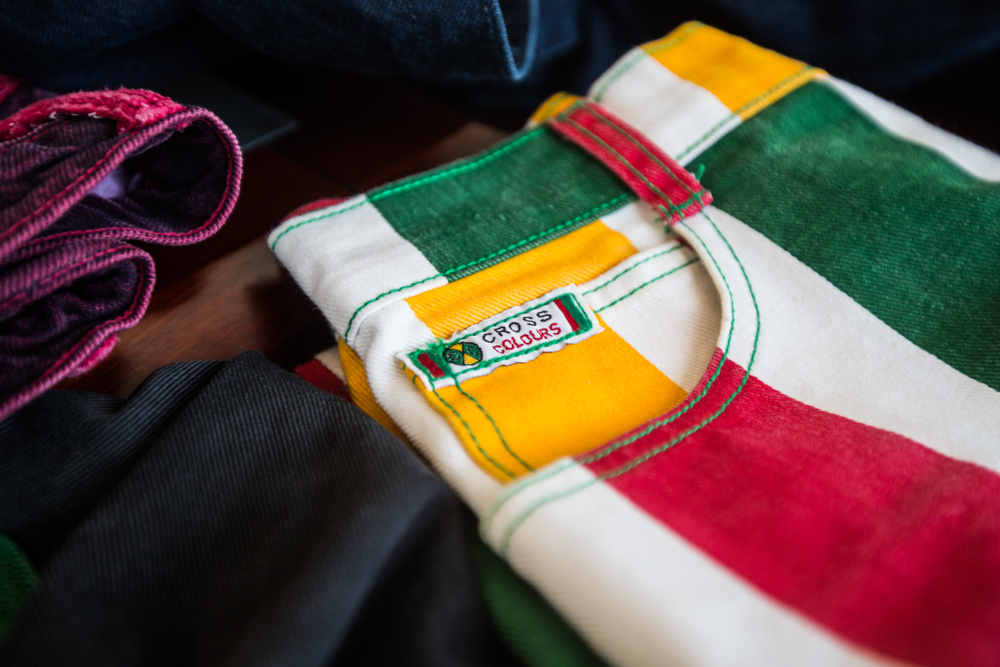
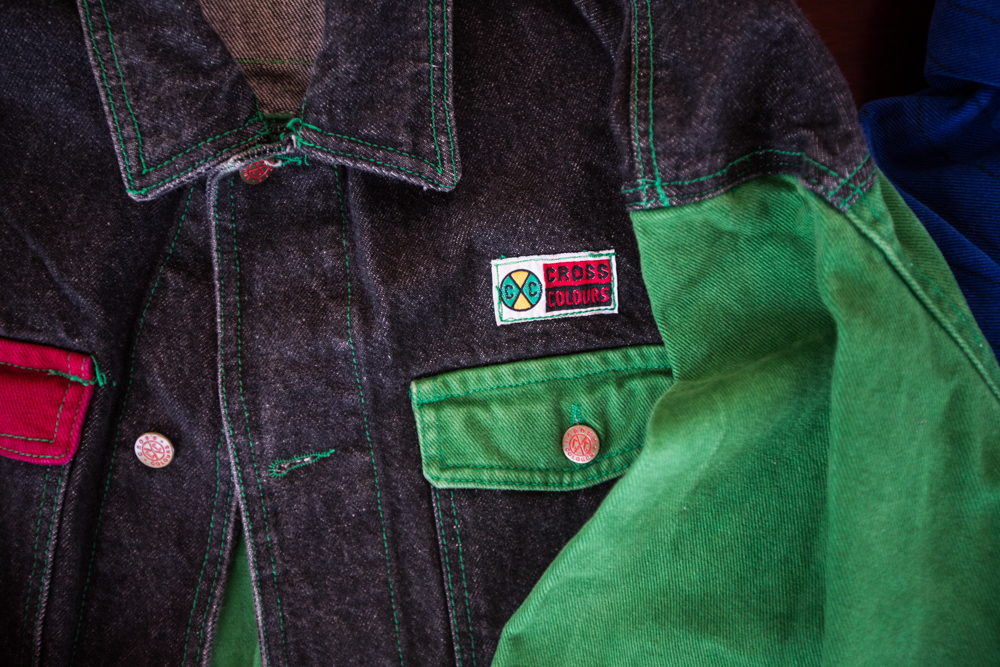
Wow. What was that like for you?
TJ: Honestly for me, we worked so hard on getting it done. Although we could see what was going on, we were in it. And we had to make sure it kept going.
Carl: It was a great working relationship because TJ and I, we just ran everything. I didn’t make a move without him. We’d sit down, we’d talk about it, and I would merchandise it. And we worked seven days a week.
TJ: We worked every day.
Carl: We worked too hard, I think, to really enjoy it.
And how long did that run for?
Carl: Oh, it was strong for three years. Non-stop. We had people coming in with cash, checks, and cashier checks – they wanted the product by any means necessary. They just had to have it.
TJ: People came to support us. From the entertainment industry, athletes, all these people came free of charge just to be of support to the brand. We’d give them clothes or something like that, but there was no money in exchange for their services. And their endorsements were usually just free, because they wanted to help. Our philosophy was not just the brand itself, but the community. Our thing was always giving back. That was our premise and we made that part of our philosophy [and] foundation as well. And we did it. We’d go to the community, give free haircuts, give away T-shirts, give away toothpaste and soap, whatever. Just to be a part of it. It was very good for the brand.
Who were some of those people?
TJ: Muhammad Ali, Sicily Tyson, Paula Abdul.
Carl: And they would just come. “Shaq is here. And he wants you to make his jeans for his Arsenio Hall rap appearance so you guys gotta make the jeans.” Okay, here comes Shaq.
TJ: Magic Johnson, anyone you could basically name. Snoop.
What happened after those three years? The market started turning around?
Carl: Well, one big mistake we made was – I think we were too nice and never said no. We should’ve had a better CFO or COO to say, “What the hell are you doing?” We had accounts coming to us in those days like JCPenney. They would fly in and beg us, “Can we please buy your merchandise?” We really weren’t ready to do a JCPenney all-stores distribution. But in a way, we probably should’ve done something with them because with Merry-Go-Round, as good as it was – as much money as we were making – was the downfall of our business.
When [Merry-Go-Round] went into bankruptcy, they took the wind out of our sails. Because all of a sudden they went from an 11 to a 7. 5 percent – no more. “Can’t ship Merry-Go-Round, they owe you 10 million, they’re not gonna pay you, we’re gonna need to downsize you, liquidate you, something to make sure we get our money…”
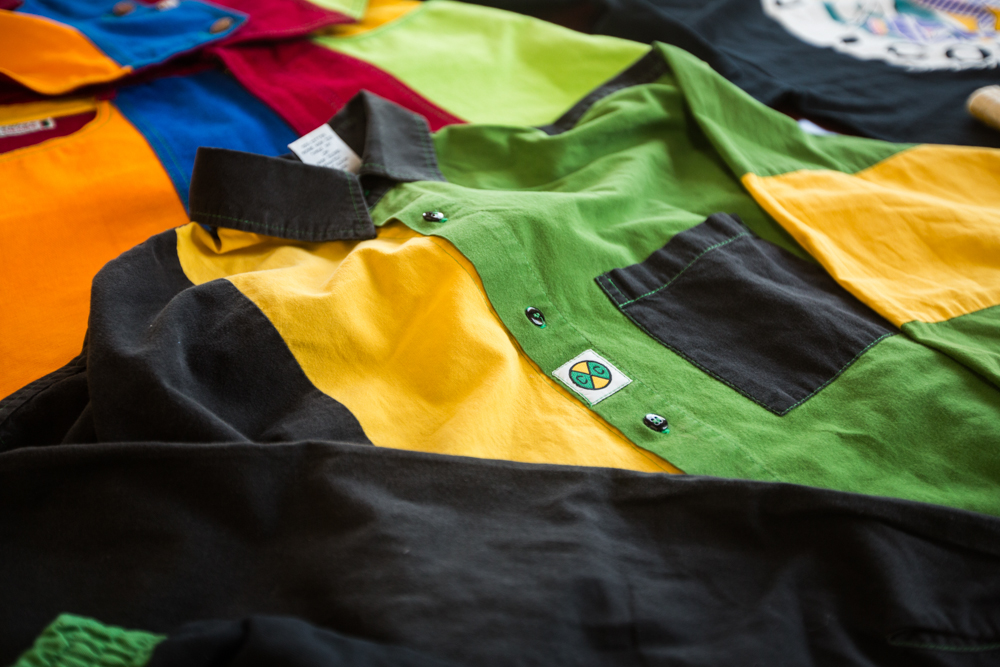
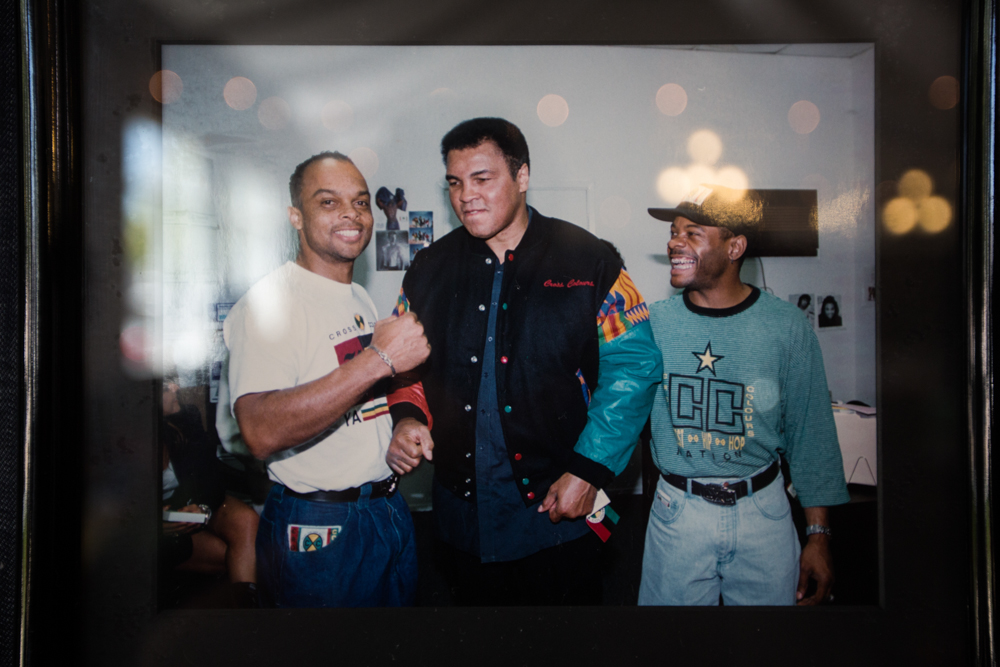
So you got stuck with all the inventory.
Carl: We had millions of dollars of inventory because yeah, we were producing up to 10 million dollars a month in shipping. It took a lot of people, a lot of piece goods, a lot of trim to do that. And all of a sudden it stopped. Just stopped. Like one day.
TJ: Everything that was out with the contractors. Fabric that was coming in that we had for stock or trim, anything – all that stopped. Meaning all the payments stop. All the work stopped, so we had to stop.
…so now we’re in the mid-1990s?
TJ: End of ’93, ’94.
Carl: And so we just basically stopped. We started to liquidate. Thank God we were able to pay all our contractors. We paid our bank. But the factory ended up with way more than we even owed them. They were supposed to give us back that money so we could reboot. Start again. And then the lawsuits started. They were overpaid 3 to 5 million that was legally – in my opinion – ours. But they said because we were in liquidation they couldn’t give it. So that sort of put the brand in suspense for twenty years.
Twenty years?!
Carl: Well, the trademark changed hands because there was a plan to go back in business; it didn’t work out and the trademark changed hands – for money – and then that person went bankrupt and so we got the trademark back.
When was that?
Carl: Last year. The trademark started coming back in January or February of last year. Then things settled for a minute and a very smart guy who I call the trademark pirate – and Mark – he basically got the trademark back. TJ was trying to register a part of it as well and Mark had part of it so it was a little convoluted. It sort of brought us together.
So then the trademark opened back up and it brought you guys all back together? And you said, “Hey, let’s do this.”
Carl: The way that it happened – everybody sort of just had to come together.
And then that whole ‘80s, ‘90s resurgence…
Carl: Resurgence is back. Everybody was like, “You have to do it.” I went to an Agenda show; I was just wearing this T-shirt, and a buyer from Karmaloop
said, “Where did you get that shirt?!” “Uh, I made it.” “I wanna buy the line.” I’m walking around the show, just to my first Agenda. “I’m Karmaloop, I’m the buyer. I’m interested, here’s my card. When you’re ready, call me and I’ll buy it.” Then somebody else said, “Carl! Urban Outfitters is interested in your brand.”
TJ and I started talking and I said, “Well, what do you wanna do?” “Well, let’s figure it out.” It’s taken, I think, almost a year to really sort of gel and really come together. Because there’s still some legal stuff. We’re trying to sort out how we really want to present ourselves. Is it a Fairfax store, is it not a Fairfax store? Is it all vintage? Do we have better pricing? Higher pricing? So we’re going through that – the motions right now. And what do we really mean to the consumer today? It’s a younger, different generation. Do they know our brand? So we start with a little bit of Instagram and now we have 5,000 followers.
I didn’t know that.
Carl: And we’ve called a few celebrities and they come. And I’m like, “Wow! Just like in the ‘90s they’re showing up! They come!” “Carl’s Colours? Yeah, man, what’s up?” “I’m doing the brand again.” “You are? I’m there. I got you.”
TJ: Although we went through some things, I think that time was very important for us, because it gave us some validation of the brand. If we had any doubts prior to right now, I think we’re all more confident in the brand in terms of performance.
Carl: It’s been an interesting ride. The apparel has been very good to me. I’ve been able to make a pretty good living from it. And, you know, it goes on. Things move on. I always say, “It’s like a marathon.” In order to win the race, you’ve gotta keep running. You gotta be in the race. That’s the only way you’re gonna have a chance to finish or end the race. You’ve gotta keep going. So that’s always been my mentality.
